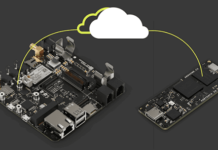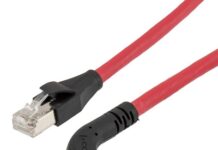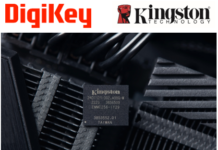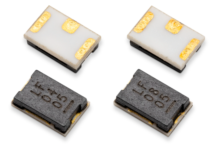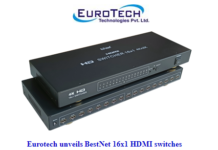
COM-HPC 1.2 Modules:- Computer-on-modules (COM) are becoming increasingly useful for a growing number and range of higher-performance applications. The latest revision of the PICMG open standard for COMs, COM-HPC 1.2, introduces the new Mini form factor, measuring only 70 mm x 95 mm, reducing weight and size without compromising performance in any way.
COM-HPC was created to handle the increasing bandwidth requirements associated with artificial intelligence (AI) workloads being run by high-end internet of things (IoT) clients and embedded edge servers. COM-HPC Mini is, because of its minimal size and weight especially suitable for mobile systems that fit that description. Examples include autonomous mobile robots, drones, and mobile test and measurement equipment, as well small box-PCs used in space constraint cabinets of automation, network infrastructures and POS/POI systems, to name just a few.
COM-HPC 1.2 overview
A migration to COM-HPC Mini should be expected simply because it delivers improved performance. That said, the migration is apt to accelerate as the Mini is designed into smaller devices that have such limited space that using earlier COM versions was not feasible. An additional range of products will finally be able to benefit by using COM-HPC products, up to and including Thunderbolt and PCIe Gen 6.
Introduced in 2023, the COM-HPC 1.2 now adds Mini. By way of comparison, COM-HPC Client defines modules sized as 95 mm x 120 mm, 120 mm x 120 mm and 120 mm x 160 mm. The COM Express Basic, meanwhile, measures 120 mm x 95 mm; the Compact version is 95 mm x 95 mm.
The embedded market is characterized by tight space requirements, yet even small devices need enormous bandwidth for AI and situational awareness. COM-HPC Mini modules, with its 95 mm x 70 mm footprint, physically fit into any design that was developed based on COM Express Basic or Compact. This creates an easy migration path for COM modules from COM Express Basic or Compact and down to the COM-HPC Mini.
The reduction in size also reduces the number of connectors needed from two in COM-HPC Client modules now to one. The single connector in the COM-HPC Mini still has 400 pins, though the pin assignment is different from the Client version. In saying that, it still features an enormous I/O range that is more than adequate for carrying high-speed signals from the processor module to the carrier boards. This single high pin-count, high-bandwidth connector supports a range of newer interfaces that are increasingly being adopted, such as PCI Express Gen 6, USB4, DisplayPort 2.0, and 25G Ethernet.
The formulation of the Mini version of the COM-HPC spec also features several mechanical advantages. The stack height from the top of a carrier board to the top of a heat spreader stacked on a COM-HPC Mini module can be as low as 15 mm, 5 mm less compared to the minimum height of COM-HPC Client modules. As a practical matter, this means COM-HPC Mini modules use soldered memory, but that makes them inherently rugged through resistance to shock and vibration and provides direct thermal coupling to the heat spreaders.
The COM-HPC Mini may seem equivalent to other mini form factors, but that’s a surface evaluation. There is not only the higher pin count, but the COM-HPC Mini’s support for up to 76 Watt leaves significantly more power reserves than the maximum 25 Watts specified with SMARC.
Given that, the COM-HPC 1.2 Mini now defines the high end of small form-factor COMs, delivering stunning levels previously available.
The Mini and the COM-HPC family
In the COM-HPC 1.2 revision, there are also two new features that will affect the entire family of COM-HPC specifications and therefore also apply to COM-HPC Mini. The connector, which was already rugged, has been reengineered to make it even more so. Also, the qualification for PCIe Gen 6 will become standard.
With the new connector, metal reinforcements on the sides of the plug are soldered for greater mechanical stability. The COM-HPC 1.2 spec calls for manufacturing the module with two new holes. The new reinforced connector can be used only if the second hole is also present. In this respect, only a minor change to the carrier board design is required to comply with Rev. 1.2. Adopting the technology for other COM-HPC versions should, therefore, be fairly straightforward, as the old and the new connector can be implemented using the same SMT soldering process.
Functionally, little changes; in fact, the old and new connectors can be used in combination. The previous connector will continue to be available, but thus far it appears that the new connector is consistently preferred.
Meanwhile PCIe Gen 6 will be specified in the near future, once the corresponding processors become available. Though processors that support PCIe Gen 6 have yet to be commercialized, it is, nonetheless, possible to design carrier boards for Gen 6. The key design consideration is that the carrier board must be prepared for PAM4 instead of PAM2 modulation.
Not only are the values 0 and 1 used, but also two intermediate stages – as 2 instead of 1 bit per transmission. As the transmitted frequencies do not change with this upgrade, there should hardly be any new challenges in terms of signal integrity.
That said, careful design is still important as Gen 6 requires even greater attention to signal noise than Gen 5. 100 GbE is already standard in many areas and this bandwidth must also be passed through to the processor. At the same time, USB is getting faster and faster.
Mini applications
Manufacturers building larger, stationary systems are often obliged to support countless interfaces. That can be easily done using previous COM-HPC specs. Builders of small and mobile devices are not compelled to support so many interfaces, however, and the COM-HPC Mini spec is perfectly suitable for those applications.
Meanwhile, there is great demand for COM-HPC modules due to the growing requirements of digitization and the industrial IoT (IIoT). These applications tend to involve various combinations of artificial intelligence, vision-based situational awareness, and spiraling data processing needs.
The new COM-HPC Mini modules are therefore, likely to be used quickly. After all, the acceptance of standardized modules has increased significantly in the last decade. At the time when the COM Express specification was launched, the COM market was still new and unproven, and customers had to be convinced to consider modules. Now the market has more experience with vendor independent specifications, and with PICMG supporting it, acceptance of the new COM-HPC 1.2 products has been high from the start. The first OEM COM-HPC solutions with 12th and 13th generation Intel Core processors and Intel Xeon D are already in production.
Conclusion
Nearly two decades ago, COM Express established a set of specifications for a family of modules for clients, for servers, and for space-constrained mini embedded applications. COM-HPC 1.2 brings a similar setup in terms of Mini and Client and Server Modules in a higher performance range but with even more form-factor options. It also adds the option to integrate further architectures including ARM application processors, GPUs, ASICS, and FPGAs.
Thus, COM-HPC is establishing itself as the most scalable computer-on-module standard by covering a wide range of applications, from small form factor to edge server designs. This simplifies the design-in process in all embedded and edge computing areas and makes it easier to develop complete product families.
The COM-HPC 1.2 specification can be downloaded for $750 from the PICMG website at www.picmg.org/product/com-hpc-module-base-specification-revision-1-2. For more information, visit www.picmg.org/openstandards/com-hpc.



